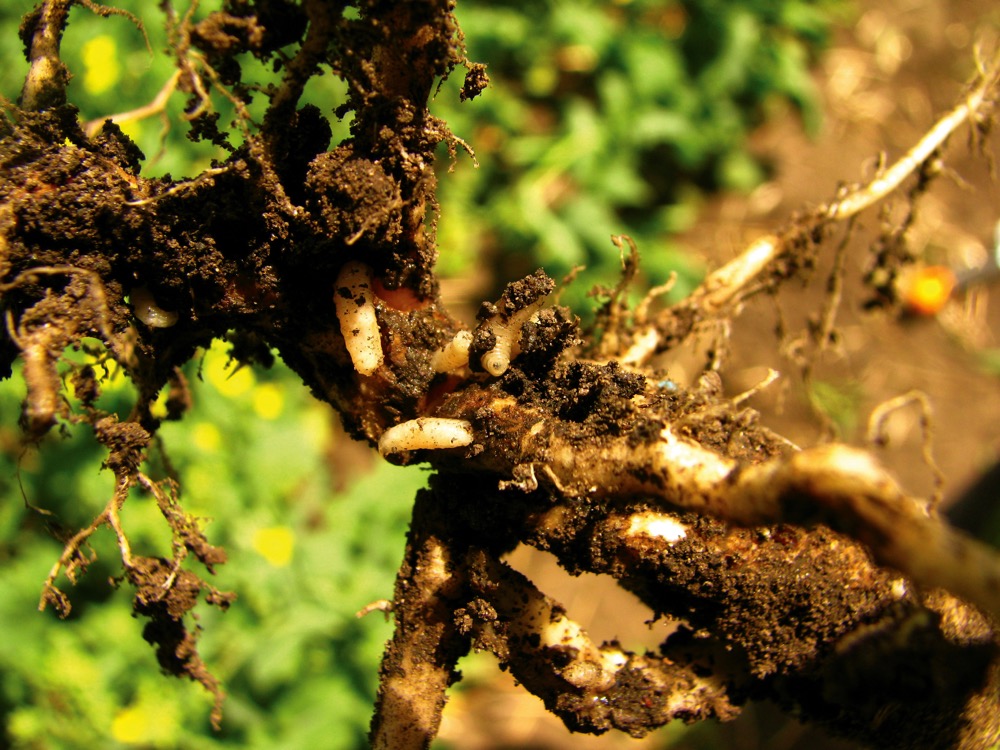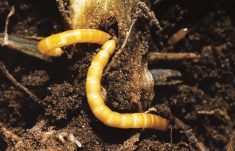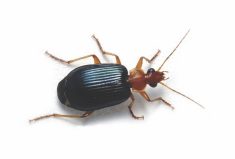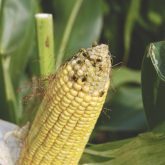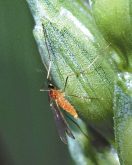Terry Young has never sprayed for insects. “I’ve had the odd bertha and lygus in my canola and wheat midge in my wheat, but they haven’t been an issue for as long as I’ve been farming, which is 30-plus years now,” he says.
Young farms at Lacombe, which is one of the most productive agricultural regions in Western Canada. Canola has been produced in the area for years and in big numbers. The pests are there. His neighbours spray for them.
So what gives on his farm?
Read Also

Agronomists share tips for evaluating new crop products and tech: Pt. 3
With new products, new production practices and new technology converging on the agriculture industry at a frenetic pace in recent…
Young doesn’t know for sure, but he has a few ideas. “I stick to a four-year rotation while many others use a two-year rotation of canola and wheat. That diversity does seem to keep everything in check,” he says. “And central Alberta does have a lot of bluffs and wetlands, providing habitat for pests and beneficials to overwinter. Maybe that helps?”
And by never spraying, Young has possibly allowed the insect ecosystem to find a balance. “Spraying kills everything, including the beneficials (insects), and from what I’ve heard, the pests always come back first,” he says.
This idea of balance might be the key. Jim Broatch made an observation in 2015 that got him thinking more about give and take within the insect ecosystem. The pest management specialist with Alberta Agriculture and Forestry was tracking the high number of cabbage root maggots found on some canola fields in central Alberta. In doing background checks on these fields, he found hints of a trend. Fields sprayed earlier in the season for flea beetles tended to have much higher levels of maggots than fields that were not sprayed.
Does that mean the flea beetle sprays also kill beneficial insects such as ground beetle predators that could reduce root maggot populations? With dozens and perhaps hundreds of insects that provide some benefit against crop pests, this would seem highly possible. However, Broatch does not have proof beyond a few field observations. “Unfortunately, other than the theory behind the situation, I’m not aware of actual studies that demonstrate it through counts and analysis,” he says. “This is a very limited area of study.”
Bring in the ladybugs
Scientists at the University of California, Berkeley, have been studying biocontrol of insects for more than 100 years. The work started in the late 1800s when California citrus trees were under attack from an invasive insect called cottony cushion scale. Interestingly, when Berkeley researchers went to the source of this insect — Australia — they found it was not a serious citrus pest at all. That’s because it lived within an ecosystem that included other insects, including vedalia beetles (a.k.a. ladybugs), that fed on and naturally controlled its population, says Miguel Altieri, professor and entomologist at the university. Vedalia beetles were brought to California and released, and Altieri says that to this day cottony cushion scale has been controlled by its natural enemies without the need for pesticides.
By recognizing and supporting this natural regulation of insect populations, growers can work toward getting off what Altieri calls the “pesticide treadmill.” Biocontrol initiatives inspired by Berkeley research have saved California producers over $1 billion in pesticide costs, he says.
Altieri says the situation Broatch observed with flea beetle sprays leading to an increase in root maggot infestations is actually quite common. “Secondary pest outbreaks have been reported in citrus, strawberries and cotton,” Altieri says. Spraying for one pest inadvertently kills the natural enemies for that pest as well as for other secondary pests. These secondary pests that would not normally cause any economic level of damage start to rise in numbers because the natural enemies that keep them regulated are gone.
He gives one example of lygus in U.S. cotton crops. “Cotton growers found that spraying lygus killed the natural enemies of boll worm, and suddenly boll worms take off.”
Leave shelter for the bugs

Altieri has been working on insect ecology for 35 years. He says a big reason for the rise in insect pests is crop monoculture. He says growers in monoculture or short rotation situations can do a lot to improve the insect ecology by leaving patches of flowering crops that provide habitat and food for beneficial insects. This is especially important early in the season so beneficials can build up and start feeding before the pest insect populations start building. “Beneficial insects function best when the pest population is at low densities and just starting to reproduce,” he says.
California vineyards grow flowers between rows and strawberry producers grow alfalfa strips as one way to break their monoculture crops and provide biodiversity, he says.
Gregory Sekulic, agronomy specialist with the Canola Council of Canada, adds that leaving later-emerging weeds — which cause little if any economic loss to a competitive well-established crop — can go a long way to boosting the diversity that a healthy balanced insect ecosystem needs. Leaving shelterbelts, fencelines and ravines as natural habitat also helps.
“The studies on this subject agree there’s a positive relationship between yield and uncultivated natural areas in close proximity to crops. So there’s a good financial incentive to leave those bluffs, fencelines and wetlands intact, or even enhanced,” Sekulic says. “Help nature help you. Leave the beneficial insects a place to live and grow, and they’ll pay dividends in pest management and reduced risk of pesticide resistance.”
Terry Young thinks growers would be more inclined to take these measures if they could see the economics more clearly. He says growers need to know the return these insects provide in reducing input costs and improving yields, and how practices such as four-year rotations and habitat protection can help.
“We haven’t put a value on these beneficial insects,” he says. “We don’t know what they’re doing to help us.”
Jay Whetter is communications manager with the Canola Council of Canada. Contact him at [email protected]. For more on beneficial insects at work in canola, go to canolawatch.org.

